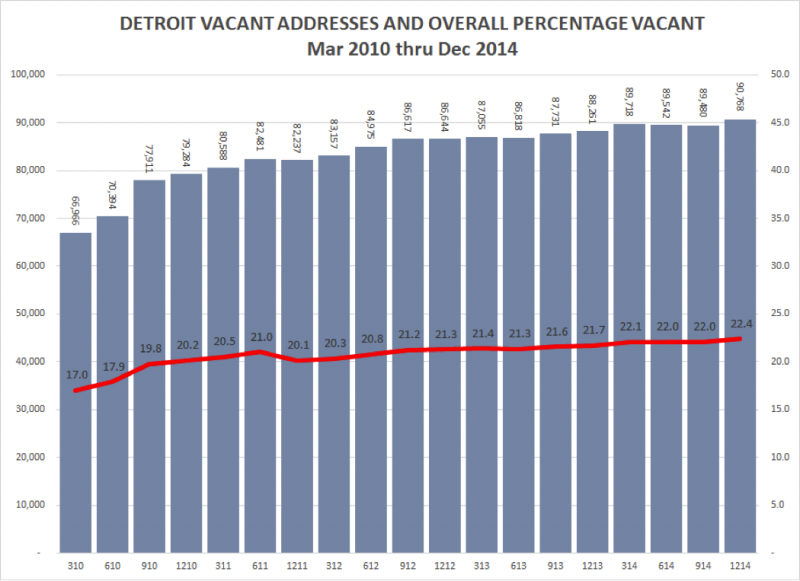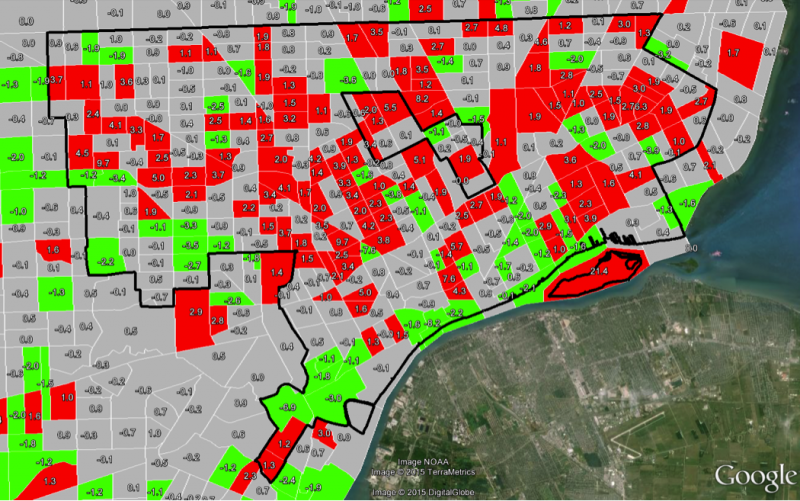There were 2,540 fewer vacant Detroit residential properties between December 2014 and December 2015, according to the U.S. Postal Service. Between September 2015 and December 2015 the number of residential vacancies decreased by 896. Overall in the month of December of 2015 there were 80,077 vacant residential addresses, which is equivalent to a 22.4 percent residential vacancy rate, according to the U.S. Postal Service. Also for December 2015 the total number of residential addresses decreased by 905 from December 2014 and by 1,163 from September 2015.
In addition to a decrease in the number of vacant addresses in the city of Detroit in December of 2015 there was also a decline in the number of “no stat” addresses; that number decreased by 786. Mail carriers denote properties as being either “vacant” or “no-stat.” Carriers on urban routes mark a property as vacant once no resident has collected mail for 90 days. Addresses are classified as “no-stat” for a variety of reasons. Addresses in rural areas that appear to be vacant for 90 days are labeled no-stat. So are addresses for properties that are still under construction, and urban addresses that the carrier decides are unlikely to be occupied again any time soon — meaning that both areas of high growth and severe decline may be labeled no-stat.




